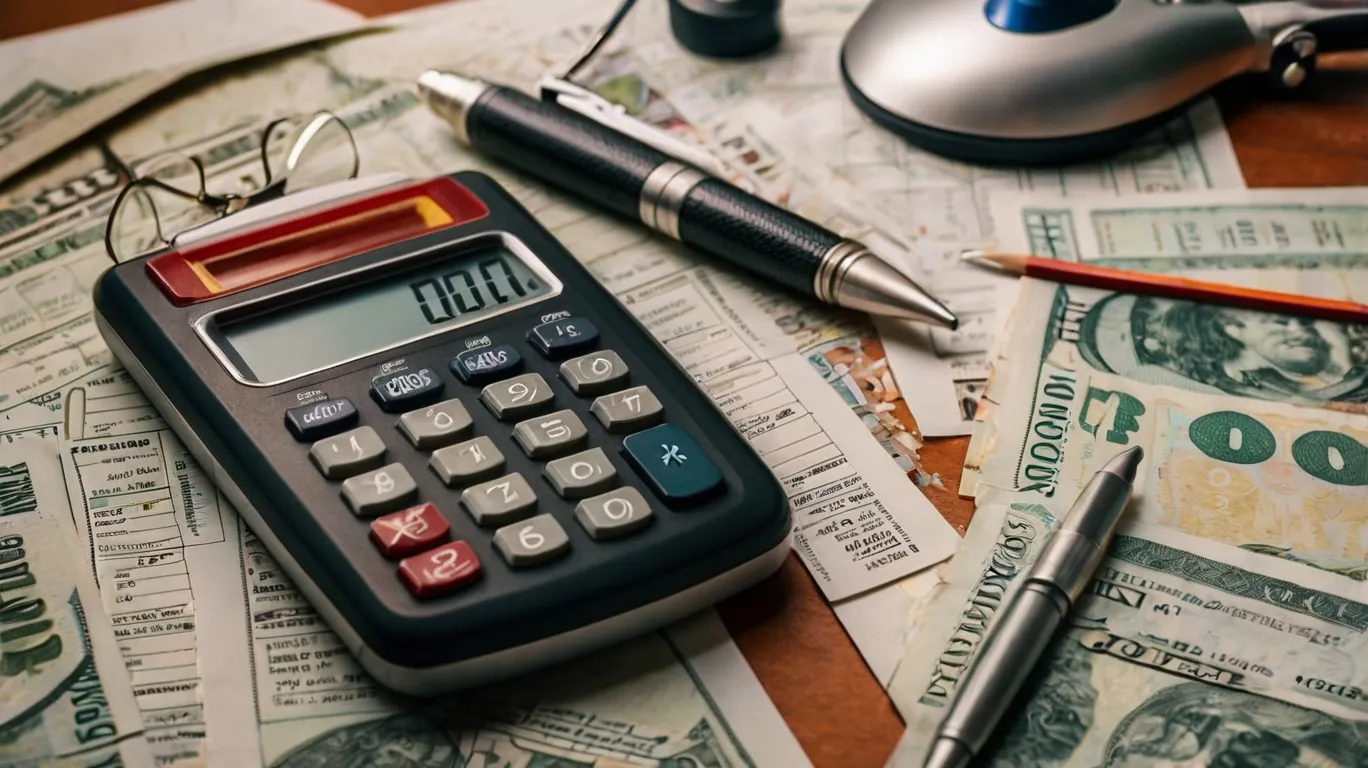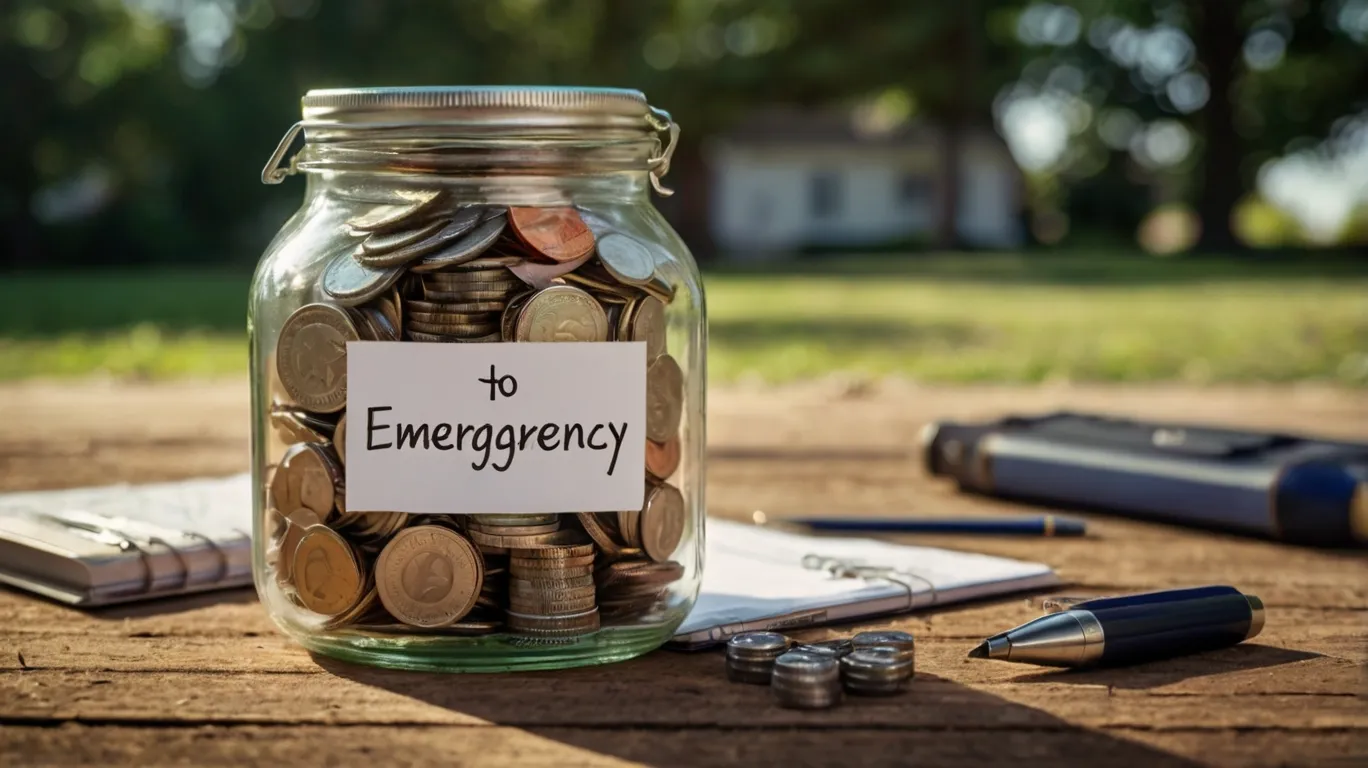Creating Your Financial Safety Net
💲How to build an emergency fund starts with understanding the immense peace of mind that comes from having money set aside specifically for unexpected events like medical emergencies, sudden job loss, or major home repairs.
This financial cushion becomes your personal safety net when life takes an unexpected turn—something approximately 40% of Americans currently lack, as they would struggle to cover even a $400 unexpected expense without going into debt. 🌟
The ideal emergency fund should cover 3-6 months of essential expenses, though your specific target may vary based on your personal circumstances. If you have an irregular income, work in an unstable industry, or have dependents relying on your income, aim for the higher end of this range or even beyond.
Begin by calculating your monthly essential costs: housing, utilities, food, transportation, healthcare, and minimum debt payments—this total becomes the foundation for your emergency savings goal. 🌟
💲Creating a realistic saving strategy is essential for successfully building your fund without feeling overwhelmed.
Start by analyzing your current spending to identify potential areas to trim expenses, then automate small, regular transfers to a dedicated high-yield savings account that’s easily accessible but separate from your daily checking account. 🌟
Even small contributions of $25-50 per week can grow surprisingly quickly when maintained consistently over time.
💲Once your emergency fund reaches your initial target, integrate it into your broader financial plan. Consider this fund your financial foundation—the secure base that enables you to take appropriate risks elsewhere in your financial life. 🌟
With a solid emergency fund in place, you can more confidently invest for retirement, pursue entrepreneurial opportunities, or make other money moves without the constant fear of financial disaster derailing your progress.
Remember that your emergency fund isn’t a one-time achievement but an ongoing financial practice that requires periodic review and replenishment whenever you need to use it. 🌟
Understanding the Basics of an Emergency Fund
💲An emergency fund is a reserve of money set aside specifically for unexpected expenses. It acts as a financial buffer that can prevent you from going into debt when life’s surprises occur. 🌟
The primary purpose of an emergency fund is to provide peace of mind, knowing that you have a safety net to rely on during emergencies. The recommended size of an emergency fund is typically three to six months’ worth of living expenses.
However, this can vary depending on individual circumstances, such as job stability, family size, and personal financial goals.
| Type of Expense | Expected Frequency | Average Cost |
|---|---|---|
| Medical Emergencies | Rare but significant | $1,000 – $5,000 |
| Car Repairs | Occasional | $500 – $2,000 |
| Job Loss | Potentially once or twice | Varies widely |
| Home Repairs | Average annually | $1,000 – $4,000 |
Setting Realistic Savings Goals

💲Building an emergency fund begins with setting achievable savings goals. Start by analyzing your monthly expenses, including rent or mortgage, utilities, groceries, transportation, and insurance. 🌟
Once you have a clear understanding of your monthly financial commitments, you can establish a target amount for your emergency fund. For example, if your monthly expenses total $3,000, aim for an emergency fund of $9,000 to $18,000.
Keep in mind that the important part is to start saving, even if it’s a small amount. Gradually increase your savings as your financial situation improves.
“The habit of saving is itself an education; it fosters every virtue, teaches self-denial, cultivates the sense of order, trains to forethought, and so broadens the mind.” – T.T. Munger
Finding the Best Savings Strategies
💲To effectively build an emergency fund, consider adopting various savings strategies that align with your lifestyle and financial habits. Some people find success in setting up automatic transfers from their checking account to a dedicated savings account. 🌟
This method ensures consistent contributions without needing to remember to transfer funds manually. Additionally, evaluate your monthly spending and identify areas where you can cut back. Redirecting money saved from reduced expenses helps in boosting your emergency fund faster.
1- Automate your savings to ensure regular contributions.
2- Cut back on non-essential expenses.
3- Increase savings gradually over time.
4- Allocate a percentage of windfalls, like tax refunds, to your fund.
Choosing the Right Account for Your Emergency Fund

💲When deciding where to keep your emergency savings, liquidity and accessibility are key factors. A high-yield savings account may be an ideal choice due to its ability to earn interest while remaining easily accessible.
Money market accounts are another option, offering competitive interest rates and check-writing privileges. Steer clear of investments like stocks for this purpose, as they carry higher risks and may result in a loss of your emergency fund principal. 🌟
Staying Disciplined and Committed
💲Maintaining commitment to building an emergency fund requires discipline and perseverance. It’s crucial not to dip into these savings for non-emergencies, such as vacations or luxury purchases.
Establish clear guidelines for what constitutes an emergency to avoid unnecessary withdrawals. Stay motivated by regularly reviewing your progress and envisioning the security your fund provides in the face of unforeseen challenges. Celebrate milestones as you reach key savings benchmarks. 🌟
Adapting Your Fund to Changing Needs
💲Life is dynamic, and so should be your emergency fund. Periodically reassess your financial situation and adjust your fund accordingly to accommodate changes like a growing family or shifts in employment status.
Major life events such as buying a home or welcoming a new family member may necessitate a larger emergency fund to cover increased expenses. Flexibility ensures that your fund remains a reliable safeguard, regardless of what life throws your way. 🌟
The Role of Financial Education in Emergency Preparedness
💲Financial literacy plays a pivotal role in building and maintaining an emergency fund. Educating yourself about personal finance, budgeting, and money management empowers you to make informed decisions.
Utilize online resources, books, and courses to enhance your financial knowledge and implement effective strategies for accumulating savings. Sharing this knowledge with family members, especially younger generations, promotes a culture of financial responsibility.
Leveraging Technology to Enhance Your Savings Efforts
💲In the digital age, technology offers numerous tools to simplify and enhance the process of building an emergency fund. Budgeting apps and online banking features enable you to track expenses and savings goals efficiently.
Some apps round up your daily purchases to the nearest dollar and transfer the difference to your savings account automatically. Explore these technological solutions to streamline your savings journey and achieve your financial targets with ease. 🌟
FAQ – Common Questions
✅ How much should I initially aim to save in my emergency fund?
It’s advisable to start with a small goal, like $1,000, and gradually work your way towards three to six months’ worth of living expenses.
✅ Can I invest my emergency fund in stocks or bonds?
No, it’s best to keep your emergency fund in liquid, low-risk accounts like high-yield savings or money market accounts to ensure accessibility.
✅ How often should I review my emergency fund goals?
Review your fund at least annually or after any major life changes, such as marriage, having children, or changing jobs.
✅ What should I do if I need to use my emergency fund?
First, ensure the expense is truly an emergency. After withdrawal, focus on replenishing the fund as soon as possible to maintain your financial security.
✅ How can I stay motivated to save consistently?
Set clear milestones, visualize the peace of mind your fund offers, and reward yourself for reaching savings goals to stay motivated.
Conclusion
💲Building an emergency fund is a fundamental step in securing your financial future. It requires commitment, discipline, and adaptability but rewards you with peace of mind and stability during life’s unforeseen events.
By setting realistic goals, choosing the right accounts, and leveraging technology and financial education, you can successfully create a robust safety net that ensures you’re prepared for whatever comes your way. Embrace the habit of saving today and lay the foundation for a secure tomorrow. 🌟
👉 From Zero to Financial Freedom
The “From Zero to Financial Freedom” course is essential to ensure a more prosperous and peaceful future for you and your family. It’s an excellent option for those seeking efficiency and quality on their journey toward financial independence.

